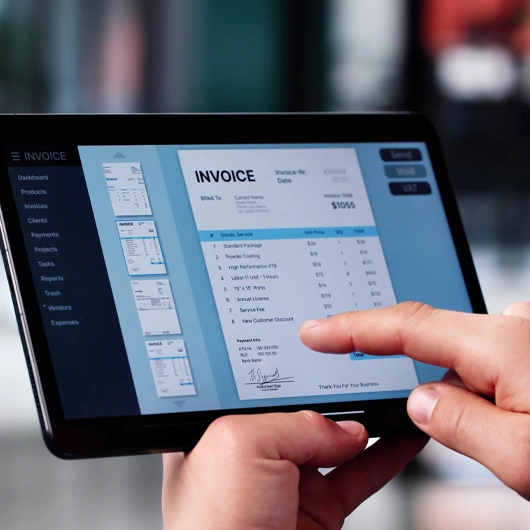Agility Matters: How to Build a Nimbler Business
Agility Matters: How to Build a Nimbler Business
Agility — the ability to pivot or adapt quickly in response to setbacks, surprises, threats and opportunities — can be a critical differentiator for businesses. Companies that can not only go with the flow, but also proactively navigate that flow, tend to be stronger and more sustainable than those that are unprepared for changes in market trends, technology, the economy and the business environment.
Think about your agility from a competitive standpoint. If a competitor launched a product or service similar to one of yours but at a lower price point, would you be prepared to respond? Could you immediately stave off that threat, or would you be caught flat-footed, with no plan for protecting your market share?
Technology is another area where agility is critical. In many industries, if you’re not an early adopter of the latest technology tools, you risk being left behind. For example, customers today expect to have convenient payment options, preferring to use credit cards, debit cards or mobile wallets over cash or checks. Companies that keep up to date on payment technologies are winning the day as they offer the convenience their customers crave.
Further, agile companies can innovate swiftly and continuously in anticipation of, or in response to, changing customer preferences. They fuel customer excitement by bringing new products and services to market, and have the flexibility to pivot quickly from strategies or products that aren’t working.
While agility is an amazing attribute for a company, it doesn’t just happen; it requires a proactive approach. Here are some actions you can take to build more agility into your business:
Collect regular feedback from your customers
One of the first rules of building a successful business is knowing your customers and prospects — understanding what they want, what they need and how you can delight them. Of course, preferences and needs are a moving target, so agility is critical. The sooner you can identify an emerging opportunity or challenge, the sooner you can come back to your clientele with a solution, whether that takes the form of new product features, adjusted pricing, enhanced service or something else.
Make sure you have channels in place for your customers to communicate with you. In a face-to-face setting, you can simply talk with customers directly to see if you’re meeting their expectations. Online, you can do a number of things, from incorporating feedback links throughout your website to engaging current and potential customers through social media. And don’t underestimate the value of surveys. If you’re working from a list that reaches your target audience, each response you receive can be helpful.
Your communications can be general — “Tell us how we’re doing” — or specific — “Tell us how you like our new product” or “How could we make this service more helpful to you?” With a survey, you can ask people to rate various aspects of your sales, service and product quality.
Once you’ve collected feedback, listen to it! If four out of five people tell you your new product idea is a bust, an internal reassessment may be in order. Remember, too, that the earlier you can engage customers in the process of evaluating potential changes, the better. Focus groups or pilot programs prior to an official launch can help you avoid sinking large sums of capital into a new product that goes nowhere.
Build a diverse, collaborative team
Having a team (or teams) that can identify emerging trends, anticipate customer needs, reimagine the status quo and play to one another’s strengths is key to remaining (or becoming) agile. Shared values and goals are essential, and each team member should be encouraged to develop their soft skills — including communication, creativity, open-mindedness, adaptability, critical thinking and problem-solving — in addition to the unique hard skills they bring to the collaboration.
With the right team in place, your business will be able to flex, adapt and innovate on demand. Appointing team leaders based on their areas of expertise can help ensure rapid and appropriate responses to challenges or opportunities. Also look for areas where you can streamline processes, so creativity isn’t stunted by red tape. For example, some businesses accelerate their processes by empowering team leaders to green-light the development and implementation of solutions so that projects don’t hung up in a complex approval process.
When your team excels, acknowledge them! Reward the behaviors you’d like to see all the time — anticipating challenges, developing innovative strategies, collaborating selflessly — and provide ongoing learning opportunities so employees can continue developing the soft and hard skills that help them fulfill their highest potential.
Stay on top of market trends
Agility demands awareness. That means closely and continually monitoring trends that affect your target demographic, your business and your industry. Follow business thought leaders and influencers in your industry. Visit your competitors’ websites to see what they’re focused on — a new campaign or product launch? New market expansion? Customer engagement? Read trade publications and newspapers. Learn what innovative business leaders in other industries are doing. Network with colleagues, partners and clients.
Taking the proactive approach of giving your customers a say in how you meet their needs; building, empowering and rewarding your team; and staying on the leading edge of trends will go a long way in helping you achieve your agility goals.
This article is for general information purposes only and is not intended to provide legal, tax, accounting or financial advice. Any reliance on the information herein is solely and exclusively at your own risk and you are urged to do your own independent research. To the extent information herein references an outside resource or Internet site, Dollar Bank is not responsible for information, products or services obtained from outside sources and Dollar Bank will not be liable for any damages that may result from your access to outside resources. As always, please consult your own counsel, accountant, or other advisor regarding your specific situation.Posted: January 22, 2025




